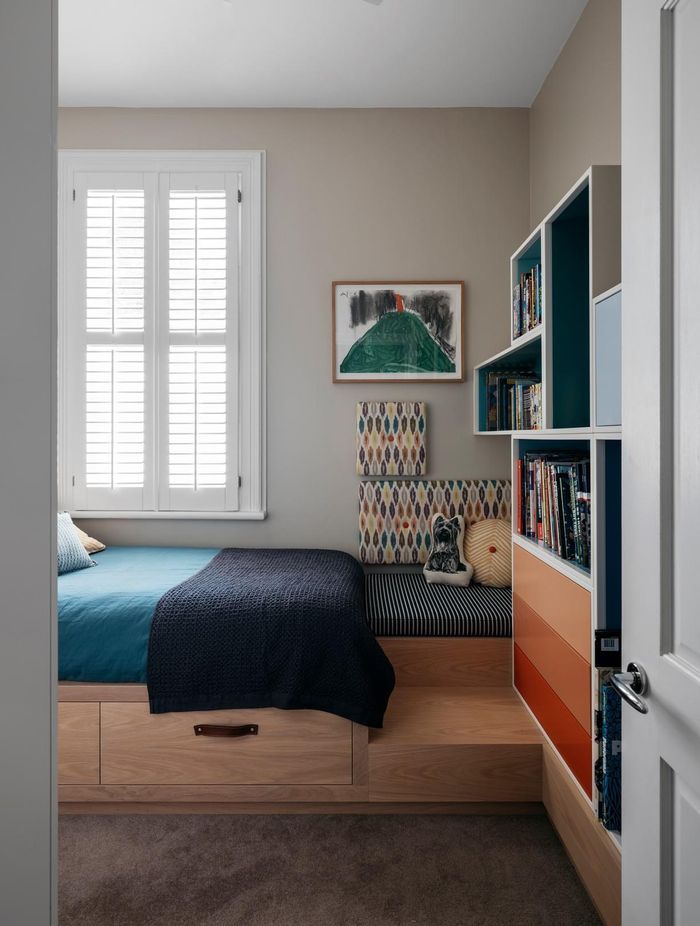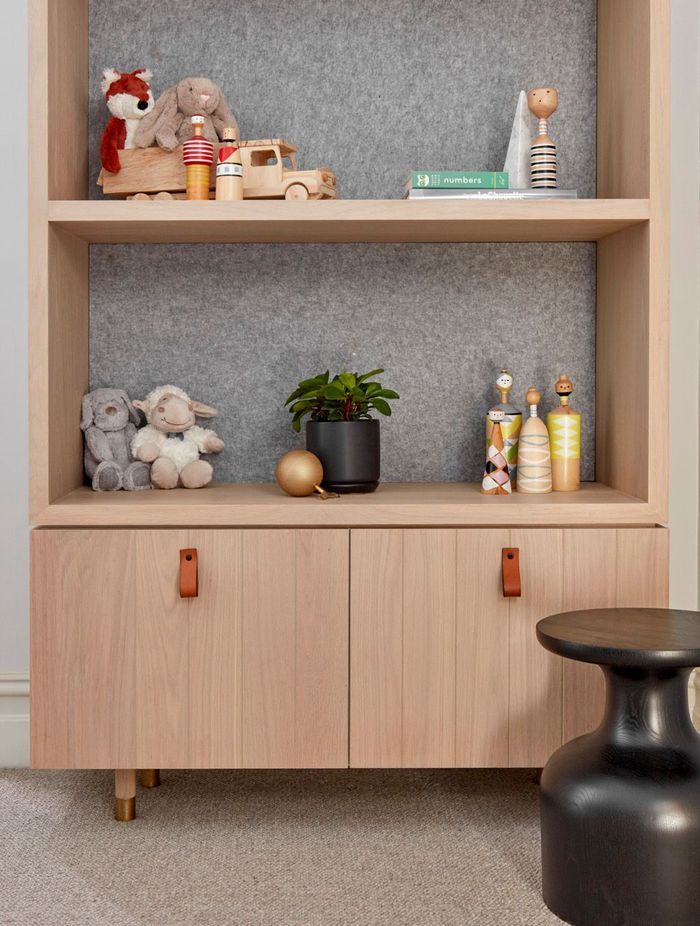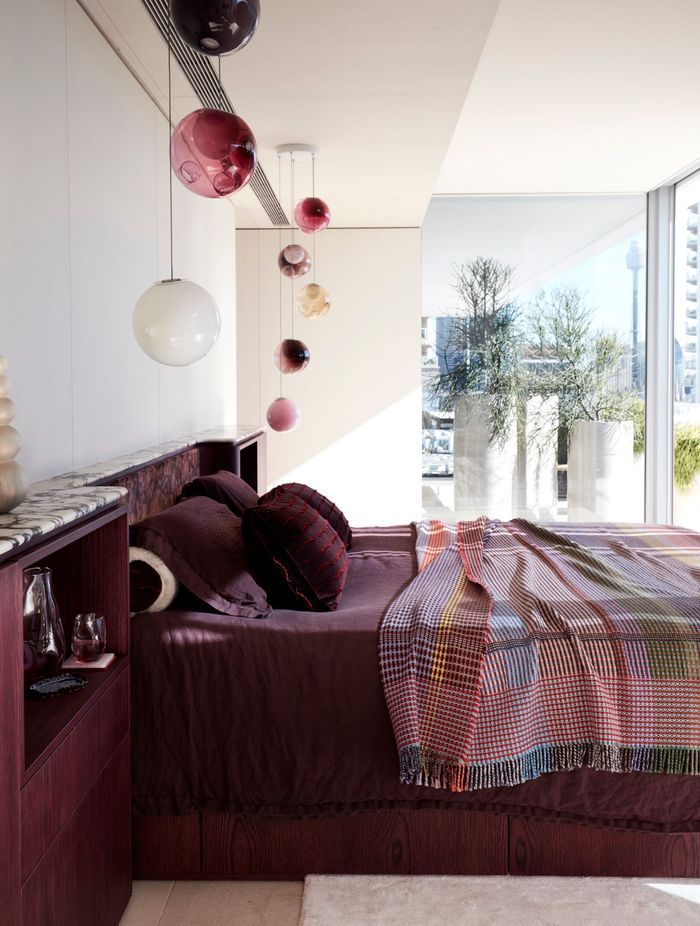From toddler to teenager; how to design a kid’s room that grows with them
Written by
04 August 2022
•
5 min read

As the first dedicated space your little one truly has for themselves, a child’s room plays an influential role in their lives. Unlike adults’ bedrooms, which should be serene, sleep-promoting sanctuaries, childhood bedrooms represent a place to read, play, imagine and dream. The ideal children’s room should encourage kids to think creatively and learn new things, while offering functionality.
However, with children’s interests prone to change in the blink of an eye, their rooms can pose a specific challenge; namely, how to design a children’s bedroom that grows with them and stands the test of time. Finding the right balance between a space that reflects your child’s interests and provides them with a safe haven while being able to adapt to their future aesthetic choices can be tricky.
Here’s how to create a nurturing room for your child.


Keep the base classic
Less can be more when it comes to kids' rooms, with a simple base colour and minimal furnishings aiding in creating a blank canvas that grows with your child and can be updated as tastes and interests change. However, classic doesn’t necessarily mean neutral. Even if you have a minimalist, predominantly white or neutral home, take this opportunity to inject colour into your (child’s) interiors.
Painting the walls of the room a different colour from the rest of the house can help make the space feel like ‘theirs’ and can enhance your child’s connection with their room. Colours that stand the test of time include blush pink, lilac, hunter green and lapis blue. Stick to cooler colours and avoid warm shades such as red and orange as these can be overly stimulating for children. Children's bedrooms in the attic of Armadale by APC Build take on a baby blue and white colour scheme that will grow with its inhabitants, while the pared-back neutral colour scheme of Amarelo Terrace by Arent&Pyke prevents the colourful furniture and bedding within from being overwhelming.

Consider wallpaper
If you’re opting for a neutral base colour, wallpaper can be a way to add vibrance and whimsy to your child’s room. Beautiful murals, nature-inspired prints and geometric patterns work well as feature walls and aid in fostering creativity.

Ask for their input
A seemingly obvious but frequently overlooked part of the design process is asking for your child’s opinion. After all, they are technically the client. While this – naturally – doesn’t apply to babies and toddlers, even young children often have fairly strong opinions on the space they want to live in. While you needn’t indulge your child’s every whim (as a general rule, Muppet-themed wallpaper doesn’t age particularly well), it can be useful to identify lasting interests to incorporate into their space as well as get their thoughts on the overall colour palette. The nursery in Albert Park Residence by Kestie Lane Studio incorporates the interests of its tiny inhabitant, displaying beloved plush animals and books to bring life to the timeless grey space.

Differentiate lasting interests from fleeting phases
As children’s interests are prone to changing and evolving rapidly, it’s best not to translate every obsession into the more permanent parts of their room decor. Parents are usually the best judges when it comes to which of their children’s interests show longevity; shorter, passing interests can be acknowledged through easily modifiable pieces like themed cushions, books, and dolls or figurines.

Get creative
Children’s rooms are ideal spaces to find wonder in the quotidian. Innovative decor can stimulate your child’s creative side. For slightly older children, create a sense of awe by (safely) suspending fairy lights or planetary models between walls. The wondrous effect of the – adult – bedroom in Dream Weaver by YSG Studio can be replicated by dangling lightweight (electric) paper lanterns from the ceiling.

The sweet escape
They mightn’t have jobs or pay taxes, but even the littlest minds need a break from the throes of life from time to time. A reading nook filled with plush cushions and snuggly throw blankets provides a space for kids to relax while encouraging them to read.

Incorporate art
Art in all its forms is an important part of any child’s life; this can take the form of funky prints, vintage movie posters, or even their own works of art. In Deco House by YSG Studio, white walls form the ideal backdrop for colourful educational toys and art.

Savvy storage
Between books, barbies, race cars, and sports equipment, storage is a practical necessity in any child’s room. Opt for multifunctional options like under-bed storage and hollow ottomans. It’s also a good idea to select storage methods that children can actually access to promote independence and encourage them to clean up after themselves. Low-profile shelving and cupboards work well.
Designing a bedroom with a slightly more mature clientele in mind? Here's how to create a bedroom that promotes deep sleep.